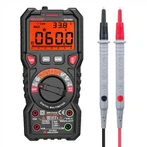Introduction to some common problems in purchasing microscopes
Microscopes have become the most common analytical instruments in laboratories and R&D rooms, but for professionals who often use microscopes, how to easily choose a microscope that meets their scientific research needs and is cost-effective is a very headache. In the past, when many users consulted us, most of them could only be regarded as simple microscope inquiry, but they didn’t know much about the purchase knowledge of microscopes. Yunfei’s technical staff summarized some microscope purchasers based on years of consulting experience. Some of the most common questions before purchasing a microscope, I hope it can help you in your selection.
Question 1. How is the price of the microscope constituted?
Many microscope purchasers have asked us such a question, that is, "how much is a microscope?" I just want to get a general idea of the quotation of the microscope, and we estimate that we will only give a vague price range with a very large price difference. The key reason for such a result lies in the configuration of the microscope. In fact, buying a microscope is very similar to buying a computer—everything has to be configured according to your requirements. For example, you need several observation modes (affecting the number of objective lenses), whether you need software, whether you need CCD, etc. These requirements greatly affect the quotation of the microscope. You must know that the most important and most valuable part of the whole microscope is the objective lens. , its number will greatly affect the price of the microscope.
Question 2: Know what type of microscope is suitable for the sample you want to test before purchasing?
Microscopes can be divided according to different functions according to the observation samples: generally there are metallographic microscopes, polarizing microscopes, stereo microscopes, biological microscopes, fluorescence microscopes, etc. Different functional microscopes are used in different ways. Polarizing microscopes are mainly used in the detection of anisotropic non-metallic materials such as geological ores. Metallographic microscopes are mainly used in the observation, identification and analysis of internal structures of various opaque materials such as metals. It is suitable for factories, mines, enterprises, institutions of higher learning and scientific research departments. Equipped with a camera device, the instrument can capture metallographic atlases, measure and analyze the atlases, and edit, output, store, and manage images. Stereo microscopes are suitable for micron-level actual effect analysis, fracture detection, inspection of electronic industry production lines, verification of printed circuit boards, verification of soldering defects (printing misalignment, edge collapse, etc.) in printed circuit assemblies, verification of single-board PCs, And all areas where there is careful observation of the sample surface, equipped with measurement software to measure various data. Biological microscopes are mainly suitable for medical diagnosis, testing, teaching, and research in the medical and health fields, schools, and scientific research units. Therefore, before purchasing, you should figure out what the sample you want to observe is, so that the merchant can recommend you a suitable microscope.
Question 3: Should I buy an upright microscope or an inverted microscope?
Metallographic microscope, also known as material microscope, is mainly used to observe the structure of metal tissue, which can be divided into upright metallographic microscope and inverted metallographic microscope
The upright metallographic microscope forms a positive image during observation, which brings great convenience to the user's observation and identification. In addition to the analysis and identification of metal samples with a height of 20-30mm, it is in line with people's daily habits. , so it is more widely used in transparent, translucent or opaque substances. Observation objects larger than 3 microns and less than 20 microns, such as cermets, electronic chips, printed circuits, LCD substrates, films, fibers, granular objects, coatings and other material surface structures and traces, can have good imaging effects. In addition, the external camera system can be easily connected to the video screen and computer for real-time and static and dynamic image observation, storage, editing, printing, combined with various software to meet the needs of more professional metallography, measurement, and interactive teaching fields. Inverted metallographic microscope uses the method of optical plane imaging to identify and analyze the structure of various metals and alloys. It is an important tool for metallographic research in metallography. It can be widely used in factories or laboratories for casting quality and raw material inspection. , or the research and analysis of metallographic structure of materials after process treatment, so as to provide intuitive analysis results, it is the key equipment for quality identification and analysis of casting, smelting, and heat treatment in mining, metallurgy, manufacturing, and mechanical processing industries. In recent years, the microelectronics industry needs high-magnification planar microscopy to support chip production. Therefore, metallographic microscopes have been introduced into this field for promotion and use, and are being continuously improved to meet the special needs of the industry. Inverted metallurgical microscope, because the observation surface of the sample coincides with the surface of the workbench downwards, and the observation objective lens is located under the workbench to observe upwards. This observation form is not limited by the height of the sample. Beautiful and generous, the base of the inverted metallographic microscope has a large supporting area, the center of gravity is low, safe, stable and reliable, the eyepiece and the supporting surface are inclined at 45°C, making observation comfortable.





